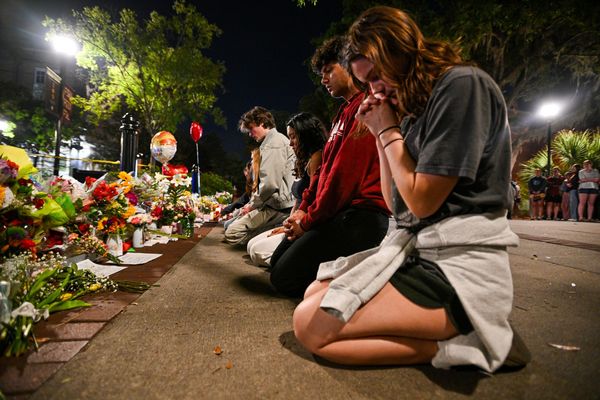
When the New England Patriots selected Cole Strange in the first round of the 2022 NFL draft, it was a move that stunned much of the football world.
Strange, a guard out of the University of Tennessee at Chattanooga, was widely projected as a second or third-round pick. Yet, Bill Belichick and his staff saw something different—an athletic lineman with the intelligence and discipline to fit their system, even if it meant reaching past consensus draft value.
Strange’s selection was emblematic of Belichick’s approach: prioritizing need and fit over traditional value assessments. He wasn’t afraid to make unexpected picks, and in this case, he was betting on Strange’s raw athletic ability and scheme versatility. However, as the Patriots stand at a crossroads, both with Strange’s future and their offensive line as a whole, the question lingers—was this bet worth it?
Fast forward to 2024, and the Patriots now face a pivotal decision. Strange suffered a torn patella tendon late last season, sidelining him for most of the year. When he finally returned, he found himself playing not at guard but at center, a role he performed admirably compared to some of the team’s other stopgap options.
Now, with his fifth-year option eligibility looming, the Patriots must decide if Strange is part of their long-term vision. Should they extend him as a key piece of their offensive line, or is it time to cut their losses and move on?
What happens next with Strange is more than just a contract decision—it’s a reflection of the Patriots’ roster-building philosophy in the post-Belichick era. How they handle his situation will provide insight into how they intend to reshape their offensive line, support a potential rookie quarterback and learn from the missteps of the past few seasons.
The Patriots have already moved on from much of their 2022 draft class, with players like Tyquan Thornton failing to stick. Strange remains one of the last significant pieces still on the roster, but even his future isn’t guaranteed.
His move to center raises an interesting discussion: Did the Patriots draft a guard in the first round only to find out, two years later, that he might be better suited at another position? The transition to center wasn’t just a desperate mid-season experiment. It may have been a legitimate solution to a problem the Patriots didn’t realize they had until David Andrews’ long-term outlook became uncertain.
If Strange is the plan at center, then New England needs to act decisively. His fifth-year option is a costly commitment, and given the uncertainty around his injury and future performance, it’s unlikely the Patriots will exercise it.
But letting him walk entirely would only open up yet another hole on a roster already littered with vacancies. The better approach may be to decline the option and instead sign Strange to a three-year, $15 million extension, giving them flexibility while securing a potential long-term starter at center.
For a franchise that has lacked continuity on the offensive line in recent years, this move could provide much-needed stability. Strange’s athleticism fits the type of offense Josh McDaniels prefers, and if Drake Maye or another young quarterback is under center in 2024, having a reliable, familiar presence snapping the ball is invaluable.
If Andrews returns and plays at his usual level, then Strange could slide back to guard as a dependable piece in the interior. Either way, keeping him on a manageable contract makes sense for a team that can’t afford to keep hemorrhaging talent.
The reality is New England’s offensive line issues didn’t start with Strange, nor will they end with him. The decision to let Joe Thuney walk, trade Shaq Mason for pennies and fail to secure a long-term replacement has haunted this team.
Strange was drafted to patch one of those self-inflicted wounds, but the bigger problem was Belichick’s philosophy in the later years of his tenure—believing he could always find hidden gems in the later rounds or through cheap free agent signings rather than investing in blue-chip talent.
Hindsight is always clearer, but it’s worth wondering what could have been had the Patriots gone in a different direction in 2022. If they had stuck with their established linemen and instead drafted Trent McDuffie, they would have had a young, All-Pro-caliber cornerback a year earlier and potentially altered their approach in the following drafts.
Instead of taking Christian Gonzalez in 2023, they could have added an impact edge rusher, a premier wide receiver or a disruptive interior defender. Players like Zay Flowers, Jordan Addison or even a foundational tight end like Sam LaPorta could have been in play.
These are the ripple effects of mismanaged roster construction, and Strange—whether he succeeds or not—is at the center of it all. Even if he develops into a reliable NFL starter, his selection represents a broader failure of planning that led to holes at premium positions. That’s why, no matter what Strange becomes, his selection will always be viewed as a defining moment of Belichick’s final years in New England.
The Patriots must now move forward with a new philosophy. Strange’s future is a decision that will signal whether they’ve learned from their mistakes. If they choose to extend him at a reasonable rate, they can salvage value from what was widely considered a reach at the time. If they let him go entirely, they risk creating yet another hole without a clear plan to fill it.
Regardless of what happens, the story of Cole Strange is one of crossroads—not just for his career, but for a franchise that is still trying to find its way after the Belichick era.







